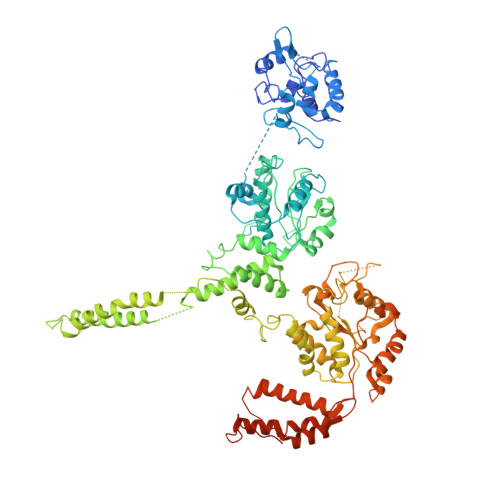Regulatory coiled-coil domains promote head-to-head assemblies of AAA+ chaperones essential for tunable activity control.
Carroni, M., Franke, K.B., Maurer, M., Jager, J., Hantke, I., Gloge, F., Linder, D., Gremer, S., Turgay, K., Bukau, B., Mogk, A.(2017) Elife 6
- PubMed: 29165246
- DOI: https://doi.org/10.7554/eLife.30120
- Primary Citation of Related Structures:
6EM8, 6EM9, 6EMW - PubMed Abstract:
Ring-forming AAA+ chaperones exert ATP-fueled substrate unfolding by threading through a central pore. This activity is potentially harmful requiring mechanisms for tight repression and substrate-specific activation. The AAA+ chaperone ClpC with the peptidase ClpP forms a bacterial protease essential to virulence and stress resistance. The adaptor MecA activates ClpC by targeting substrates and stimulating ClpC ATPase activity. We show how ClpC is repressed in its ground state by determining ClpC cryo-EM structures with and without MecA. ClpC forms large two-helical assemblies that associate via head-to-head contacts between coiled-coil middle domains (MDs). MecA converts this resting state to an active planar ring structure by binding to MD interaction sites. Loss of ClpC repression in MD mutants causes constitutive activation and severe cellular toxicity. These findings unravel an unexpected regulatory concept executed by coiled-coil MDs to tightly control AAA+ chaperone activity.
Organizational Affiliation:
Swedish Cryo-EM Facility, Science for Life Laboratory Stockholm University, Solna, Sweden.














